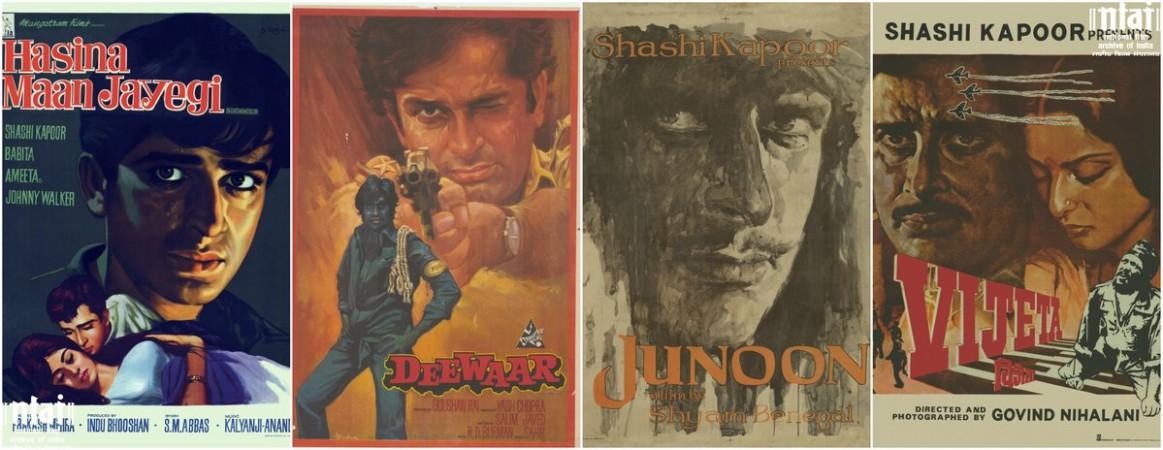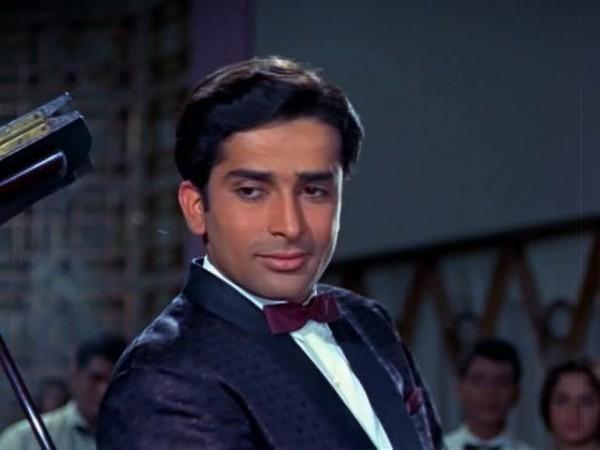
The first family of Indian cinema grieved on Monday, December 4, 2017, at the demise of Shashi Kapoor — a member of its second generation that took the Hindi film industry to new heights.
Shashi Kapoor, who passed away at a Mumbai hospital at the age of 79 after prolonged illness, was in no way the most illustrious member of the clan. That recognition would go to his brother Raj Kapoor, who was given the moniker "showman of the century" for the films he produced and acted in.
And yet, the Hindi film industry without Shashi Kapoor would find within itself a void that would consume many other big actors and films. Try imagining a Deewar or a Trishul without him.
Of course, he is not the most-remembered actor from either film, and yet that small "Mere paas maa hai" is much more memorable than any of the other heated dialogues that established Amitabh Bachchan as the angry young man of the Hindi film industry that was transitioning into the Bollywood we now know it as.
After all, 55 of the 116 films he appeared in had multiple leading men. And Shashi Kapoor was such an integral part of them that his absence would render the films without a soul.

From small to big
The boy who was born Balbir Raj Kapoor would make his debut as an actor at a very tender age, appearing in his father Prithviraj Kapoor's films under the name Shashiraj. He would go on to play the younger version of his brother Raj in films like Aag (1948) and Aawara (1951) — a mantle that would be passed on to Rishi Kapoor in Mera Naam Joker (1970).
His first film as a leading man was Dharmaputra in 1961. The rest of the decade, he would romance established heroine Nanda to the hilt on screen, declaring in a 2011 interview to the Hindu that she was his favourite female co-star.
Over the next two decades, he would be at the forefront of commercial cinema, while simultaneously acting as the vanguard for the parallel film movement. For example, he managed to deliver the Prakash Mehra potboiler Namak Halaal and the thought-provoking Govind Nihalani offering Vijeta the same year — 1982.
He had already shown this flair when he delivered the critically-acclaimed Shakespeare Wallah and the blockbuster Jab Jab Phool Khile in the same year — 1965.

International and parallel cinema
These were just some indications that Shashi Kapoor was destined for greater heights. While his father and brothers — the latter including Shammi Kapoor — entertained the masses, he chose to dabble in films that would redefine the path of Indian cinema and acting.
While Indians had started appearing in Hollywood and world cinema quite early, Shashi Kapoor ensured that the roles were not two-bit parts, like that of IS Johar in the multi-Oscar-winning Lawrence of Arabia (1962).
Herman Hesse's Siddhartha (1972) — with Shashi Kapoor in the lead — has come to be regarded as one of the top Asian historical films, and is also lauded for its themes, like self discovery.

He would go on to produce the aforementioned Vijeta, the 1981 film 36 Chowringhee Lane — which marked the directing debut of Aparna Sen and starred his wife Jennifer Kendal — and the 1984 film Utsav — where he also acted as a wealthy man after a fallen woman.
His contribution to arts was recognised by India when he was bestowed the Padma Bhushan in 2011 and the Dadasaheb Phalke Award — the highest honour in Indian cinema — in 2015. This is not counting the three times he had won the national award.
His demise marks the end of the second generation of an illustrious clan — Prithvi Raj Kapoor had died in 1972, Raj Kapoor in 1988 and Shammi Kapoor in 2011 — that still has a lot to give to Indian cinema. It remains to be seen to what extent those contributions match those by the big four Kapoors.




!['Had denied Housefull franchise as they wanted me to wear a bikini': Tia Bajpai on turning down bold scripts [Exclusive] 'Had denied Housefull franchise as they wanted me to wear a bikini': Tia Bajpai on turning down bold scripts [Exclusive]](https://data1.ibtimes.co.in/en/full/806605/had-denied-housefull-franchise-they-wanted-me-wear-bikini-tia-bajpai-turning-down-bold.png?w=220&h=135&l=50&t=40)











!['Had denied Housefull franchise as they wanted me to wear a bikini': Tia Bajpai on turning down bold scripts [Exclusive]](https://data1.ibtimes.co.in/en/full/806605/had-denied-housefull-franchise-they-wanted-me-wear-bikini-tia-bajpai-turning-down-bold.png?w=220&h=135)
